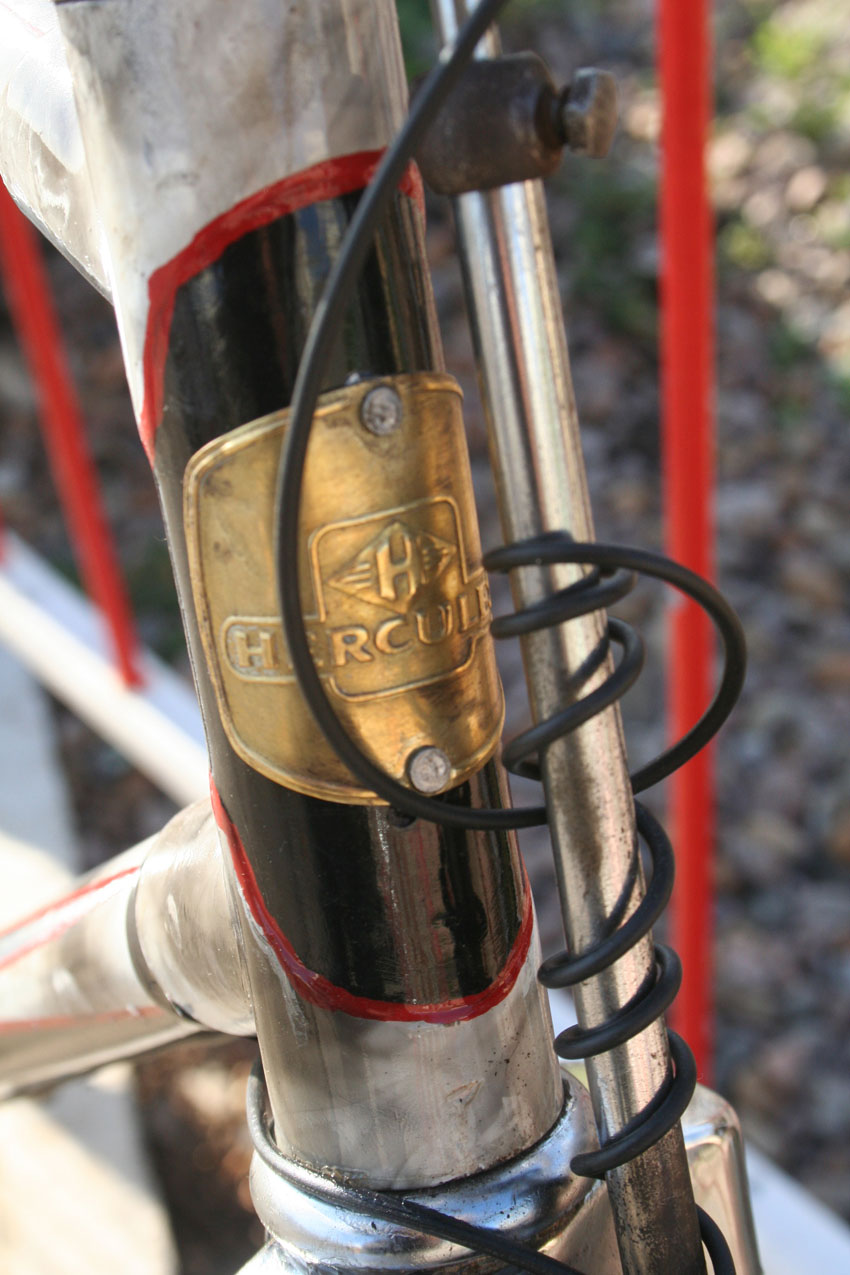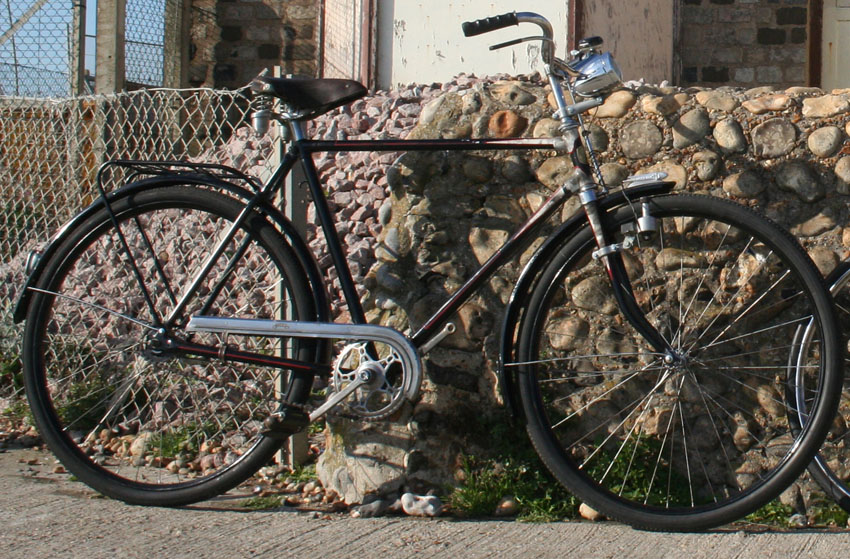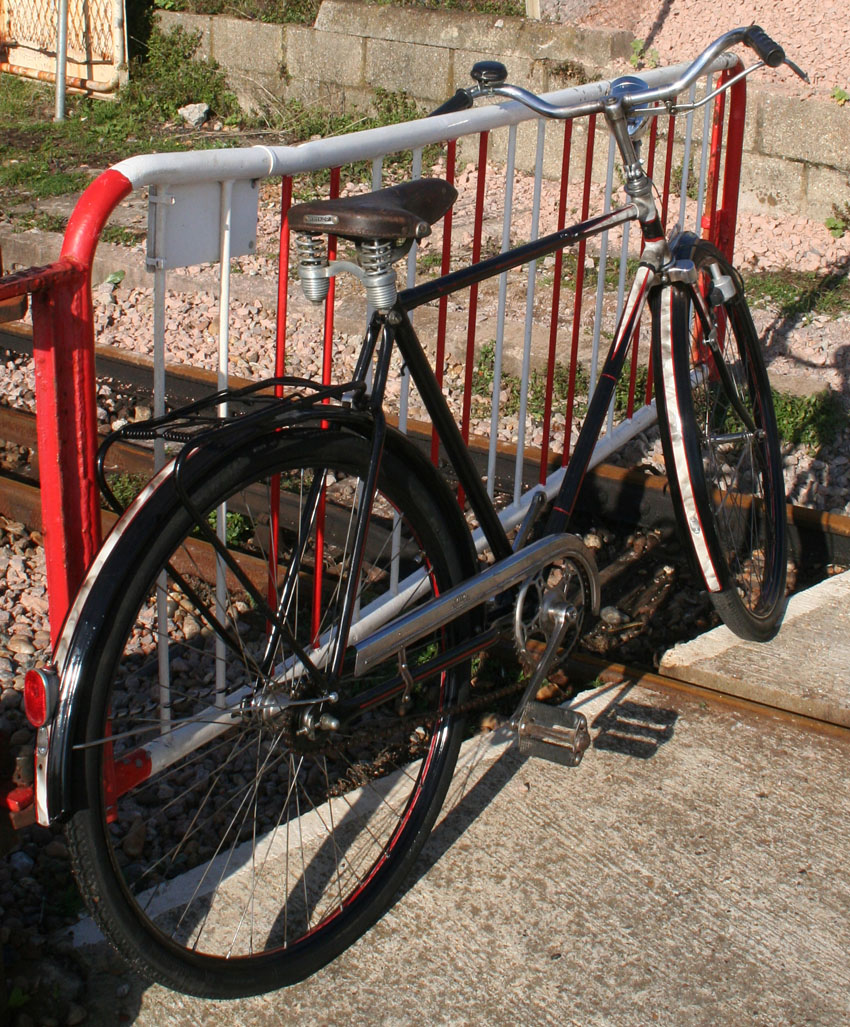

1939 Herrenrad Hercules
Fahrrad Werke, Nurnberg, Germany
24″ Frame
28″ Tyres
(Now sold)

The German Hercules bicycle is a large and powerful machine sporting a mascot that looks very much like a missile on its front mudguard. Germany was certainly very militaristic and nationalistic in the thirties and it’s interesting to see how this was reflected in the style of their bicycles.

This bicycle was restored for me in 2008 by my friend Patrick in Paris. It’s a rare bicycle, even in Germany. The location for these photos is on Brighton seafront in the Volks Railway yards.





The German Hercules company had only the name in common with its British counterpart. The company was created by Carl Marschute, one of the founders of the German bicycle and motorcycle industry, who went on to make bicycles, motorcycles, cyclemotors, mopeds, scooters, and cars. Nurnberg became a main centre for cycle and motorcycle production, with Victoria opening a nearby factory in 1886, followed by Express. In 1888, the British company Premier built a second factory in Nurnberg. In 1894 Mars AG turned from manufacturing stoves to bicycles. In 1895 the Sirius Bicycle Works became the Triumph factory.
In 1889, Carl Marschute employed 70 workers and produced 800 bicycles; by 1894 there were 170 employees with a turnover of 4700 bicycles. By 1900, however, over-production created difficulties in the bicycle industry (not only in Germany, but in America and England too). American imports compounded the problem. Like many other companies (again, not just in Germany, but in England, America and France too), Marschute solved the problem by moving into the manufacture of motorcycles.
When he was joined by his brother Henry as financial director, the company name changed from Marschute to Hercules Werke AG, opening its doors in 1903 in Nuremberg with their first motorcycle being an engine hung on a heavy-duty bicycle frame as many others were doing. Drive was direct from the engine to the rear wheel via belt. Hercules outsourced engines from many other companies rather than make their own engines.
Hercules’ main focus in its early years was on motorcycles with small capacity engines. They began to increase to larger machines in the thirties and even saw some competition and long distance endurance success.
They made various commercial vehicles between 1905 and 1928. In 1932, when tax reductions made 3-wheeler cars profitable, they brought out the two-seater Hercules Coupe (below), powered by a 200cc ILO engine. It was only in production for one year.
With the success of their motorised departments, bicycle production was not the main priority for the company, but they maintained a presence in the market, and the Hercules bicycle was a strong, reliable well-built machine with a good reputation.

World War II resulted in heavy damage to the Hercules factory and postwar production did not resume until 1950.

GERMAN HERCULES v BRITISH HERCULES

































